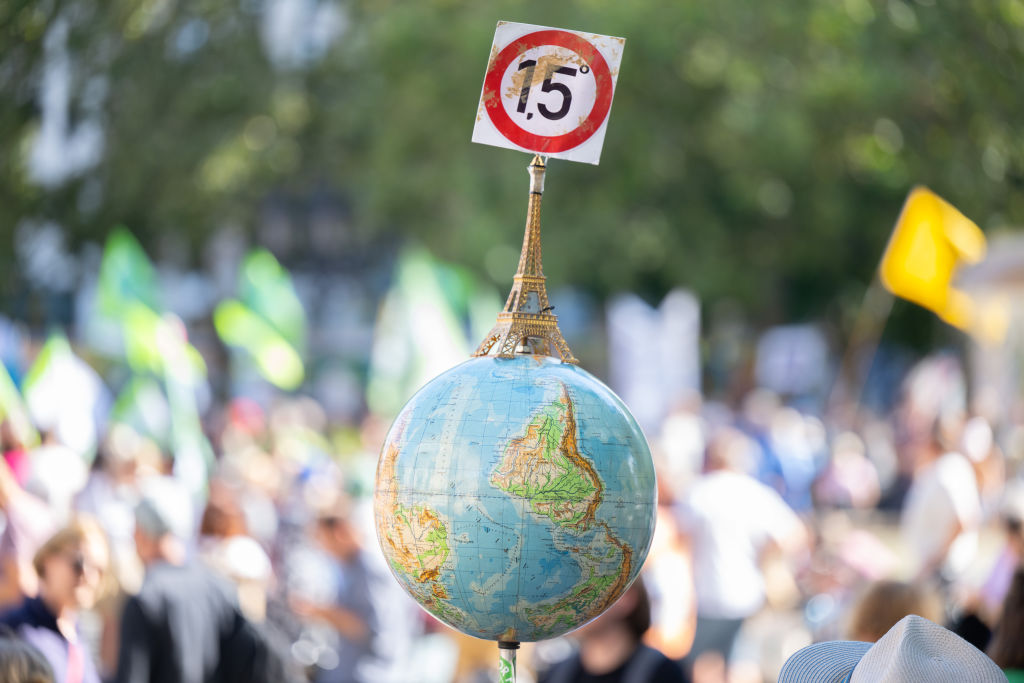The landmark Paris climate agreement called for nations to keep global temperature increase to “well below” 2 degrees Celsius, with an aspiration of limiting it to 1.5 degrees C above the preindustrial average. The benchmarks are supposed to stave off some of the worst effects of climate change. But even if countries fulfill their decarbonization pledges in the coming decades, their emissions trajectories put those targets well out of reach, according to a new report from the United Nations Environment Programme.
If countries fully implemented their plans to cut carbon emissions as currently promised under the Paris Agreement framework, the planet will still warm 2.9 degrees Celsius, or 5.2 degrees Fahrenheit. Assuming a world in which countries also meet their current goals to zero out net carbon emissions in the coming decades, temperatures will still increase about 2.5 degrees C, or 4.5 degrees F, according to the analysis.
“Even in the most optimistic scenario considered in this report, the chance of limiting global warming to 1.5 degrees Celsius is only 14 percent, and the various scenarios leave open a large possibility that global warming exceeds 2 degrees Celsius or even 3 degrees Celsius,” the report noted.
The analysis found that global emissions need to drop by more than a quarter to keep warming to 2 degrees C in the next seven years. To meet the more ambitious 1.5-degree target, emissions will need to fall by more than 40 percent by 2030. Those cuts should largely come from developed countries and high-income households, which are responsible for the bulk of emissions, the report noted. About 10 percent of individuals contribute to nearly half of all emissions globally.
The emissions gap report is an annual assessment conducted by the United Nations Environment Programme and published in the lead-up to the United Nations climate conference, or COP, which is scheduled to begin at the end of this month in Dubai. It is the most robust analysis of where greenhouse gas emissions are headed under current policies — and where they need to be headed to limit warming. Researchers assess the pledges made by countries under the Paris Agreement and estimate the emissions reductions that are likely if they are fulfilled.
The report’s findings are particularly significant this year because countries are set to conduct the first-ever “global stocktake” since the Paris Agreement was ratified in 2016. When countries signed on to the international treaty, they agreed to a number of goals, including reducing carbon emissions to limit warming and providing financial assistance to developing countries. The stocktake is an inventory of how much progress countries have made toward these goals.
The emissions assessment emphasizes that the world is off track in its quest to accomplish the aims of that agreement. It supports a number of recent analyses suggesting that the 1.5-degree goal is increasingly out of reach.
“It does underscore the need for a robust response to the global stocktake,” said Taryn Fransen, a climate policy expert at the nonprofit World Resources Institute and a lead author of the report. “The question is, politically, what do countries do about this at COP28?”
Fransen said she hoped the findings in the report would drive countries to agree to more ambitious emissions reductions at the climate conference later this month. A strong outcome might include language agreeing to transition away from the use of fossil fuels, dramatically increase the use of renewable energy, double energy efficiency, and boost finance to developing nations experiencing the worst effects of climate change, she added.
The report does highlight a few bright spots in the climate landscape. For one, pledges by countries have become more ambitious since the Paris Agreement was signed. Current pledges include 10 percent more reductions in emissions compared to the initial pledges submitted. Countries are also increasingly implementing the policies that they promised to. In recent years, the United States has passed legislation that is expected to cut its emissions by at least a third, and the European Union has passed a slew of measures that could help it meet its 2030 goal ahead of schedule.
“Countries are getting closer to actually achieving the goals they set out,” said Fransen. “That’s the good news. The bad news is those goals are not sufficient. They’re just not ambitious enough to limit warming to 1.5 degrees.”
Given the low likelihood that warming will be contained to 1.5 degrees, the report emphasized the need for techniques to remove carbon dioxide from the atmosphere. Methods such as afforestation and storing carbon dioxide in geological formations, soil, and marine and coastal ecosystems are increasingly becoming crucial, the report argues.
“The expanded use of carbon dioxide removal is unavoidable if the Paris Agreement long-term temperature goal is to remain within reach,” the report said.




